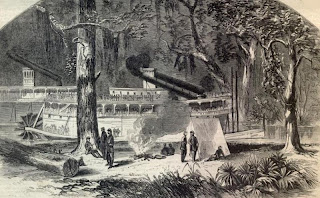Somewhere in the Black Sea....
The Combatants line up
I decided that this evening should be given over to the first play test of The Portable Naval Wargame rather than painting as these rules have become an itch that needing scratching! Seriously though, I was unable to contain my excitement any longer and so this evening I set up an 8 x 9 Hexon playing area, dragged out the 1/3000th Turkish and Black Sea Fleet Russians and set to with the following action.
The forces involved were very similar in composition - dreadnought type, a cruiser and a pair of destroyers and there specifications were as follows:
Turkish
Yavuz Sultan Selim (BC), defensive combat power (9), offensive combat power (8), secondary allowance (4), torpedo allowance (1) and a speed of 4.
Midilli (LC), defensive combat power (4), offensive combat power (3), secondary N/A, torpedo allowance (1) and a speed of 4.
Muavent-I Millye x 2 (DD), defensive combat power (2), offensive combat power (1), secondary N/A, torpedo allowance (2) and a speed of 4.
Russian
Impetrica Marija (BB), defensive combat power (8), offensive combat power (9), secondary allowance (4), torpedo allowance (1) and a speed of 3.
Kagul (PC), defensive combat power (3), offensive combat power 4, secondary N/A, torpedo allowance (1) and a speed of 3.
Bespokoiny x 2 (DD), defensive combat power (3), offensive combat power (2), secondary N/A, torpedo allowance (3) and a speed of 5.
The Russian were travelling from the northern edge of the playing area with the Turks coming from the south.
Turn 1. The Russians won the initiative rolling 7 against the Turkish 2 and so the Turks were made to move first. The Turks kept in a fairly compact formation with the cruiser in the van and the destroyers to the rear of the battle cruiser. The Russians however were content to keep there own heavy metal at a distance with the cruiser whilst the two new and powerful destroyers headed off at top speed to engage the Turks with torpedoes - with which they were very well equipped. The two big ships opened fire with the Russian scoring a single hit whilst the Turks failed to register.
The Russian Offensive combat factor of 9 was the same as the Turkish defensive combat power and so the dice roll was a straight d6. The score was 6! This meant that one point of damage was scored with the chance of another (a 6 brings a re roll). the second was a 3 so the Russians had to be content with a single hit. the Turkish reply was also at evens - 8 versus 8 - but the dice roll was only a three so no effect. As no other ships were in range this concluded the turn and the white marker on the Turkish ship was solemnly converted to a black one. The end of the turn looked something like this.
The start of the Russian destroyers charge to glory (at the top of the picture)
Turn 2. The Turks won the initiative with a roll of 10 to the Russian 7 and so the Turks opted to let the Russian move first. This was to prove to be a major mistake. The Russian dreadnought continued to lurk at long range with only the cruiser to keep her company whilst the destroyers steamed in to head the Turkish formation off as a prelude to a massed torpedo attack.Although fast the Turkish ships were unable to take sufficient avoiding action but instead counted on the firepower of the cruiser, destroyers and the secondary battery of the battle cruiser to rectify the unfavourable tactical positon they found themselves in.
The Russian dreadnought was able to inflict another hit on the Turkish battle cruiser (remember that her defense was now at 8 due to her previous hit yielding the Russian ship a +1 modifier) - heavy damage but nothing fatal. The Russian destroyers though, were about to take centre stage. Two salvoes, each of three torpedo rolls were launched at the Turkish flagship. the scores were 1, 2, 3, 5, 6 and 5 which inflicted 4 hits (meaning the ship was reduced to 3 points remaining!). The two ships paid for their boldness with hits being scored from the cruiser (rolling at evens and a 5 scored) and two rolls at -1causing 4 hits - two rolls of a 6 followed by two rolls of a 5 -from the Turkish destroyers. Incredibly, the Turkish flagship chose to fire at the Russian dreadnought and manged to score a hit with a roll of 5 (the roll was at evens).
The end of the turn looked something like this:
The gallant fight of the Russian destroyers
Turn 3. The Russian won the initiative 7 to 2 and so the Turks moved first. the heavily damaged battle cruiser swung her helm over and limped away from the action - she was still able to make a speed of 3 hexes so would not be caught by the Russians. her escorting destroyers formed up at her rear thereby screening her from any unwamted attention as did the cruiser. The remaining Russian destroyer, down to a single hit point limped off in the opposite direction, their job done and in the most dramatic fashion - 'Ourrah Pobieda!'
The end of the action with the Russian destroyer(s) in the foreground
The Turkish destroyers and the cruiser escort their stricken flagship (viewed from the west)
There you have it - the first test of the Portable Naval Wargame and it appeared to work pretty well. I will detail my thoughts and observations in the next post as I need to go away and digest the content!




























